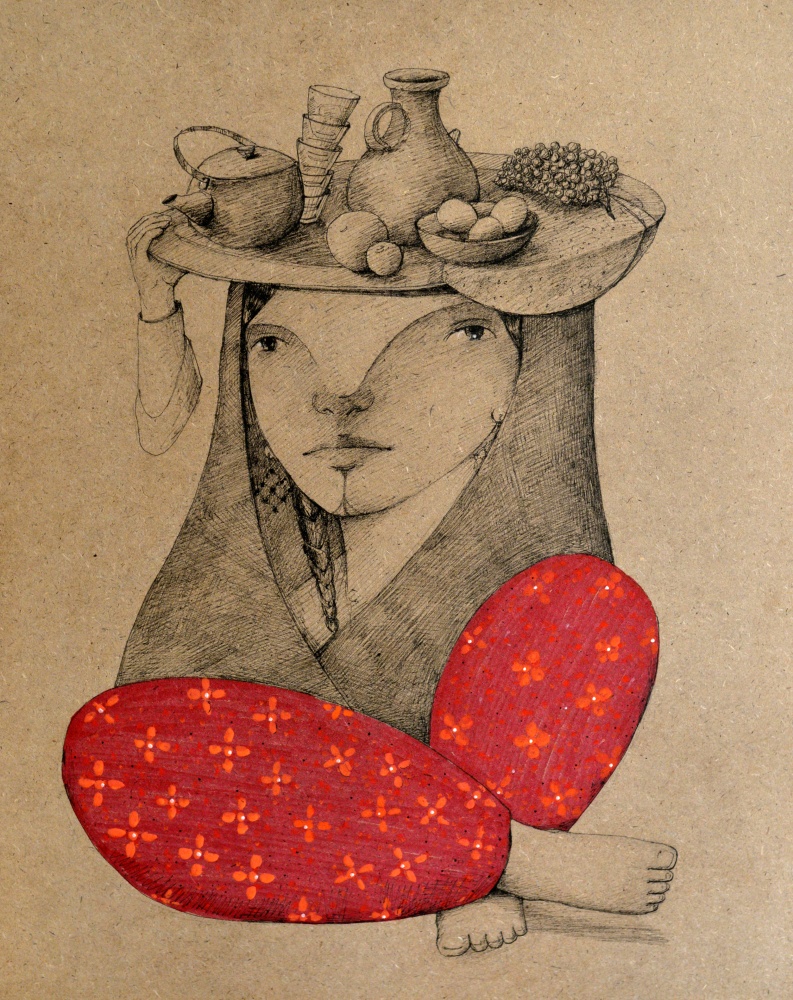
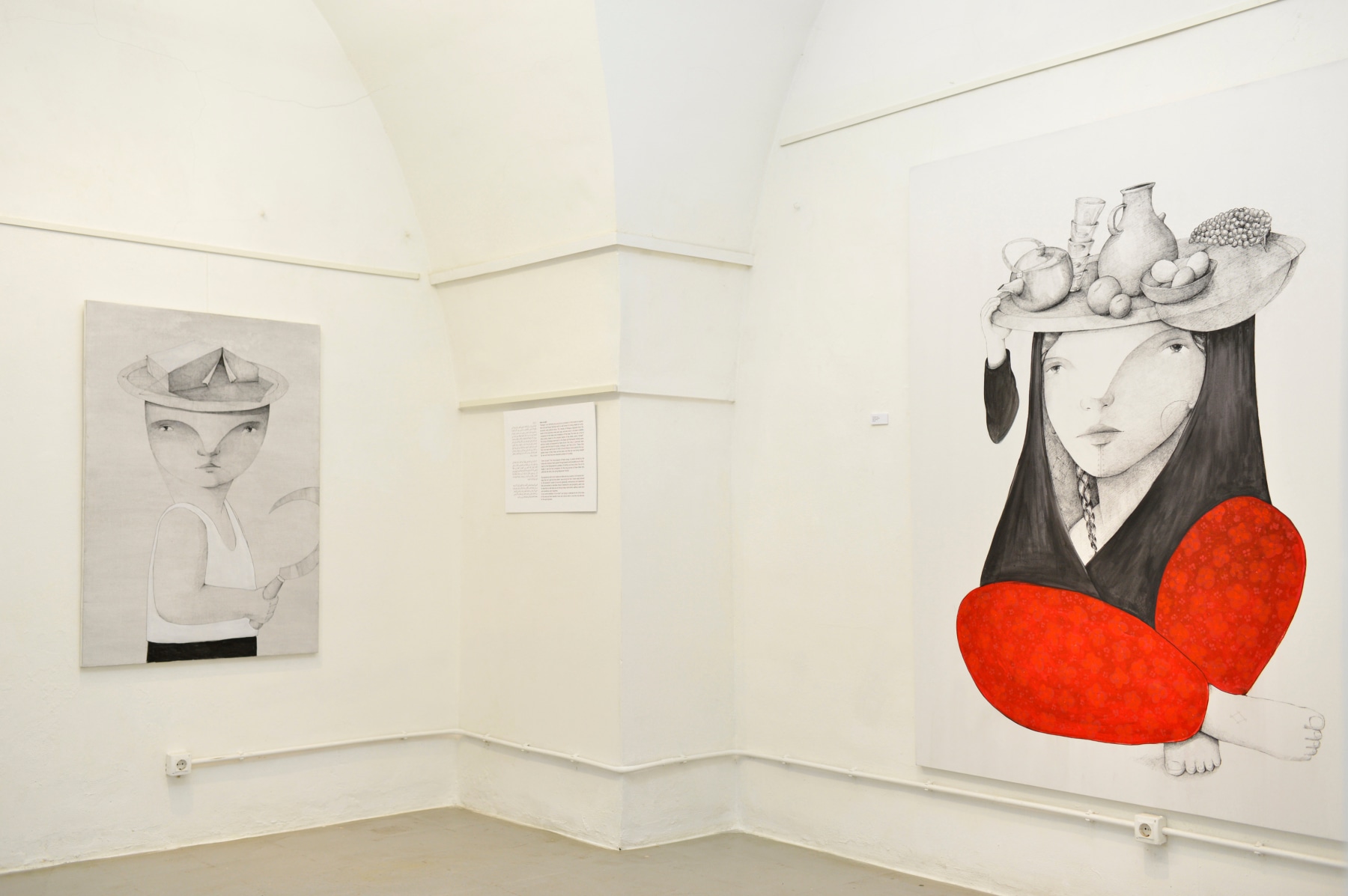
Installation view of Mohamad Khayata's exhibition, Umm Al Zuluf, at 392rmeil393 gallery, Beirut, 2017
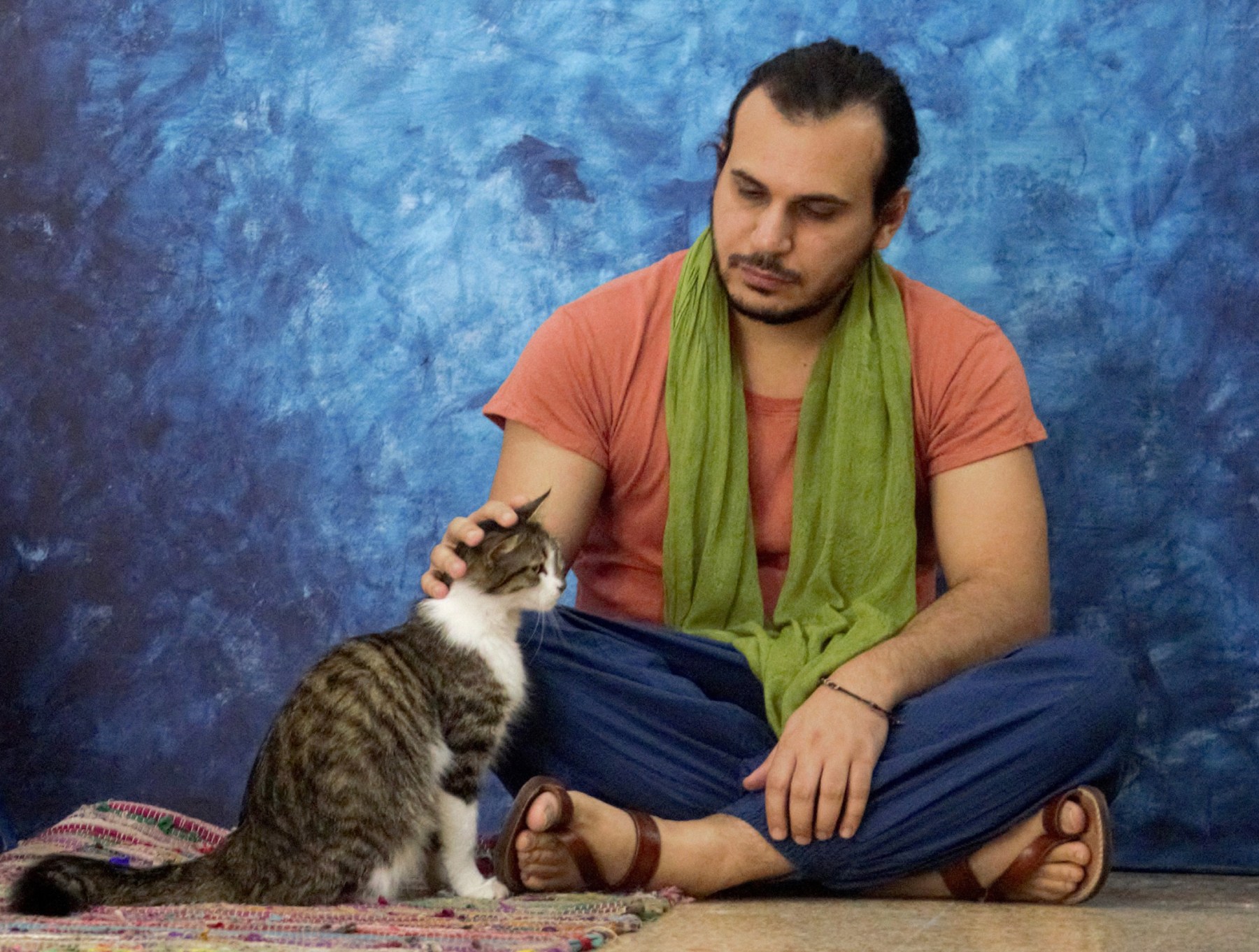
In 2012, then a fresh arts graduate, Mohamad Khayata travelled to Lebanon for an exhibition in Tripoli. That trip, as for so many, has turned into a semi-permanent migration, and Beirut has become Khayata’s home. In the intervening years, his practice has evolved from photography to encompass mixed media, painting, sculpture and music, often combining paintings within his photographic work to produce a multi-layered exploration of identity and nation, often revolving around an on-going motif in his work: the maddeh, or patchwork quilt, which functions as a metaphorical and also literal reflection of the artist’s desire to stitch Syria back together. Khayata explains the process to The Journal, his experience moving to Lebanon in 2012 and the evolution of his artistic practice.
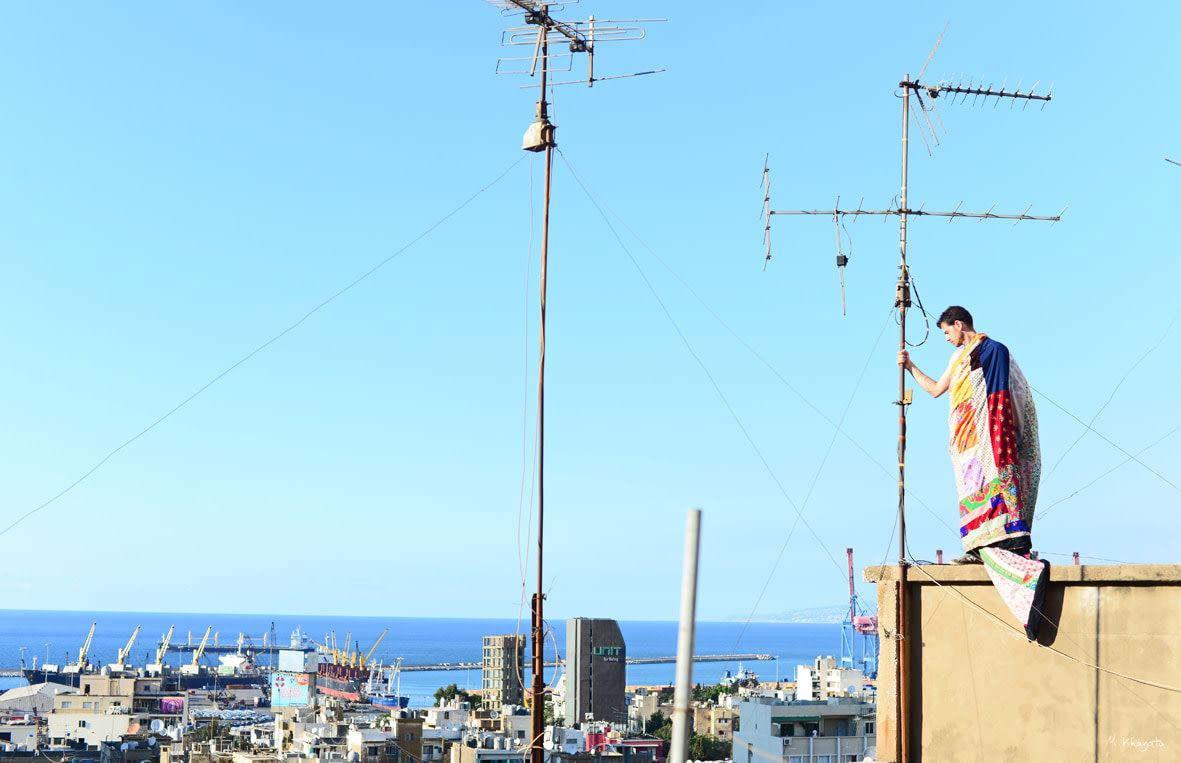
Like many Syrian artists, I hadn’t planned on leaving permanently, so never had the chance to say goodbye properly to my home. My body was in Beirut, but for a long time I felt connected to my old life in Damascus, unable to move on and suspended in the uncertainty of whether I could return or not. I am, however, a proactive person, and I found Beirut filled with creativity: I met musicians, dancers, writers and visual artists, both Lebanese and Syrian.
Through Dr Jawad Al Asadi, the founder and director of the Babel Theatre, I was offered a studio space within the building and this is when things started to come together. To have one’s own space again, after feeling so untethered and in transit is a feeling that is hard to describe. It let me breathe again. Everybody needs a space of their own and it was absolutely magical after hours to have the theatre all to myself.
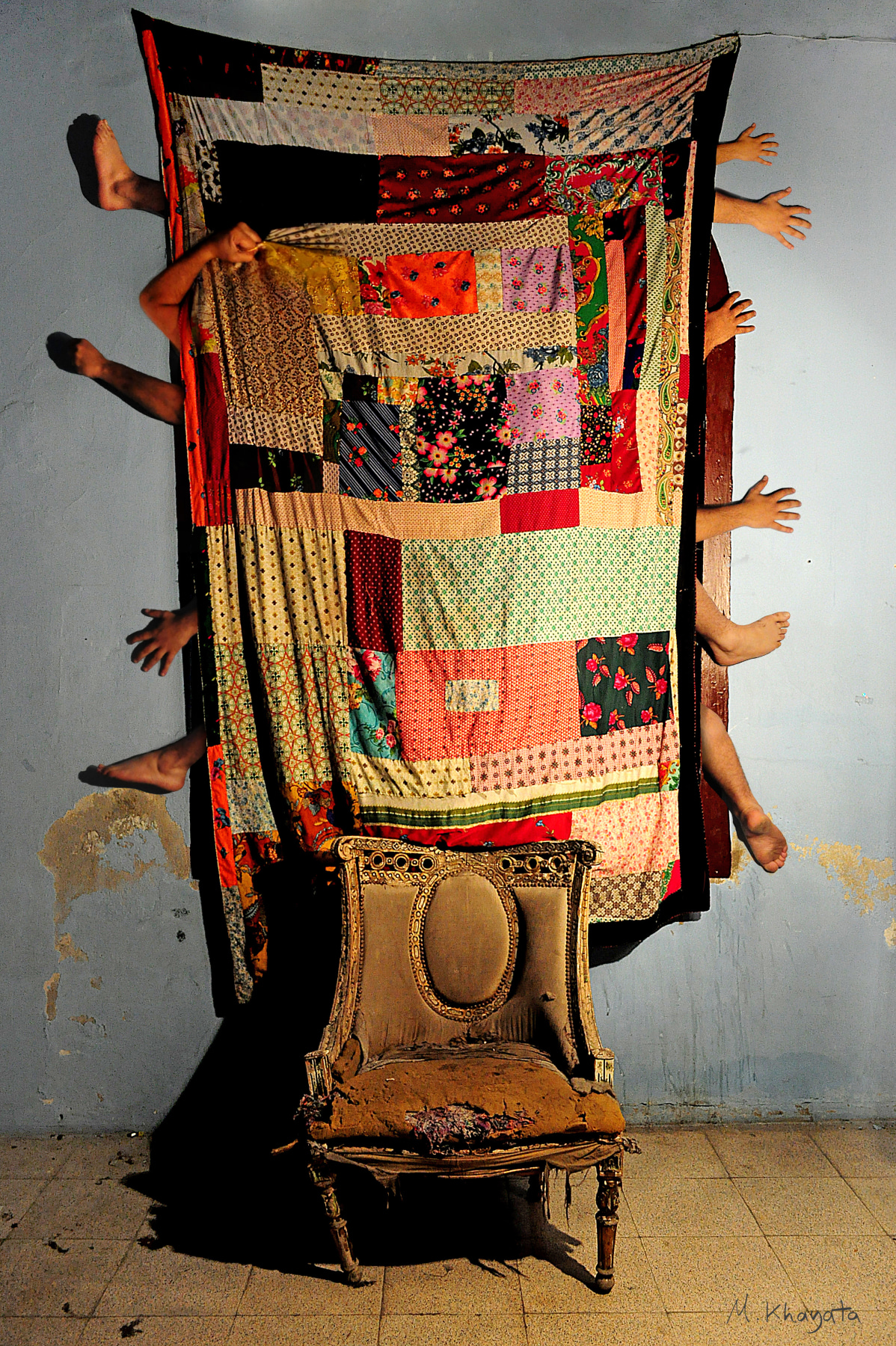
It was also through Babel Theatre that I met art director and designer Ghina Sibaii, who collaborated with me on Bits & Pieces at the 392rmeil393 gallery (at which I have gone on to present several exhibitions). We are both interested in memories and paraphernalia. She opened me up beyond photography to painting, installations and even jewellery made out of broken glass. It was revelatory. I had new channels through which to express myself.
Bits & Pieces was also significant because it marked a shift from photography to painting, and, ultimately, the combination of the two. The paintings I made for the show depict people wrapped in a quilt, or maddeh – the quilts I painted comprised ‘patchwork’ of ruined buildings, broken glass, and so on (I did also make a physical quilt, but we’ll get to that later). The paintings depicted broken pieces of furniture, doorways and luggage – symbols of a broken Syria. The quilt represents my family maddeh, left behind, an object of comfort and home that now embodies fears and uncertainty, but also a desire to sew the country together, piece by piece. These quilts can be found in the most humble of houses across Syria and it was in them that I found the perfect medium to gather and combine stories: memories are patched together and brought back to a whole capable of giving voice to those who are so often unheard, or simply to reveal their stories.
Bits and Pieces, in turn, led to my next project, Stitching My Syria Back (2014), in which I combined painting and photography as well as the craft element explored with Ghina: I decided to take that madah out of the paintings and make it ‘real’. Stitching my Syria Back featured photographs taken in two locations: in Beirut, but also my very first studio in Old Damascus (Bab Touma) in 2012, before I left. The work was inspired by memories of my mother making a patchwork quilt and I wanted to transform this from an act of labour into an act of art. Then, in Lebanon, I took photographs of people around Beirut wearing a new maddeh that Ghina and I had made. The urban, ruined backdrop of Beirut resonated with the destruction of Syria.
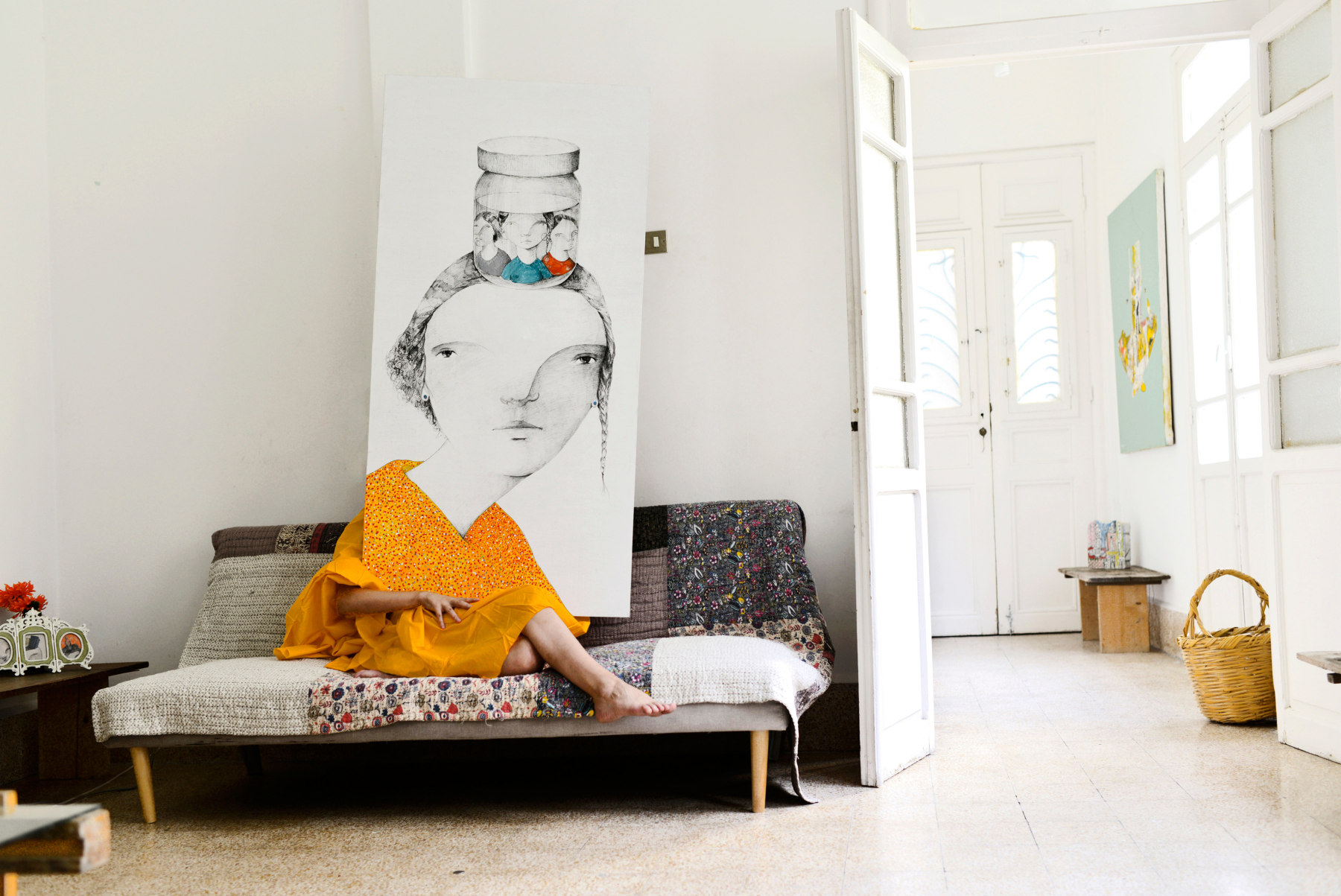
In fact, Beirut comes with its own challenges and being Syrian here can be difficult. That feeling of being connected to an old life can also lead to a feeling of being fractured – of having a line that divides the life that you are living now, with the life you left behind. I explored this in my series Walking on Thread (2015), before doing Paintings in Photos (2017 to date). Here, I ask people to hold up my paintings – their faces effectively replaced by the faces in paintings. I like exploring the juxtaposition of people’s identities and ideas against their surroundings.
My recent series, Takhalli (2018) features 15 mixed media installations dealing with fears: fighting fear has been part of my identity since I left Syria. it also marks my return to sculptural work, something I haven’t done since my earliest years as an art student. There are hot air balloons created out of miniature tanks, for example – I’m just fascinated by objects like this. Did you know that after the First World War, they didn’t know what to do with all the tanks they’d created, so they converted them into agricultural use? There is something so frighteningly human about that: only we can take objects of death and destruction and flip them into objects of peace and prosperity like that. Death, war, politics, economy, they’re all interlinked and they’ve been on my mind.
I’ve also started incorporating sculpture into photography, as in the images of the cement accropode block on people, a sculpture I’ve called Abu Al Nadam. Placed by real estate developers on coastal sites, this object is increasingly present on Lebanese shores and has become an involuntary symbol of savage overbuilding and the takeover of public spaces. For me, it represents the relentless, stolid drive of those who pursue their own private interests, with no regards for the preservation of nature, beauty and communal wellbeing.
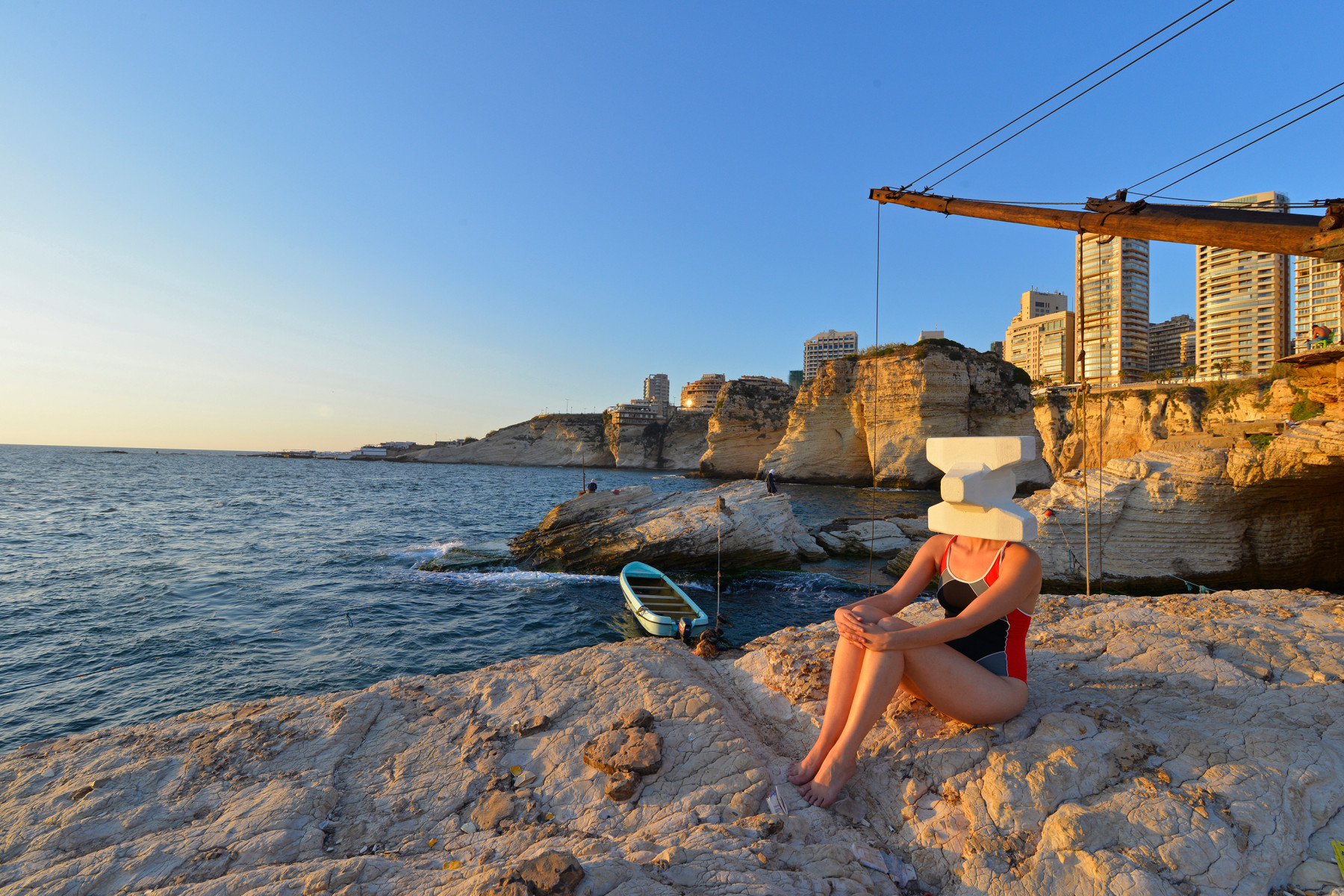
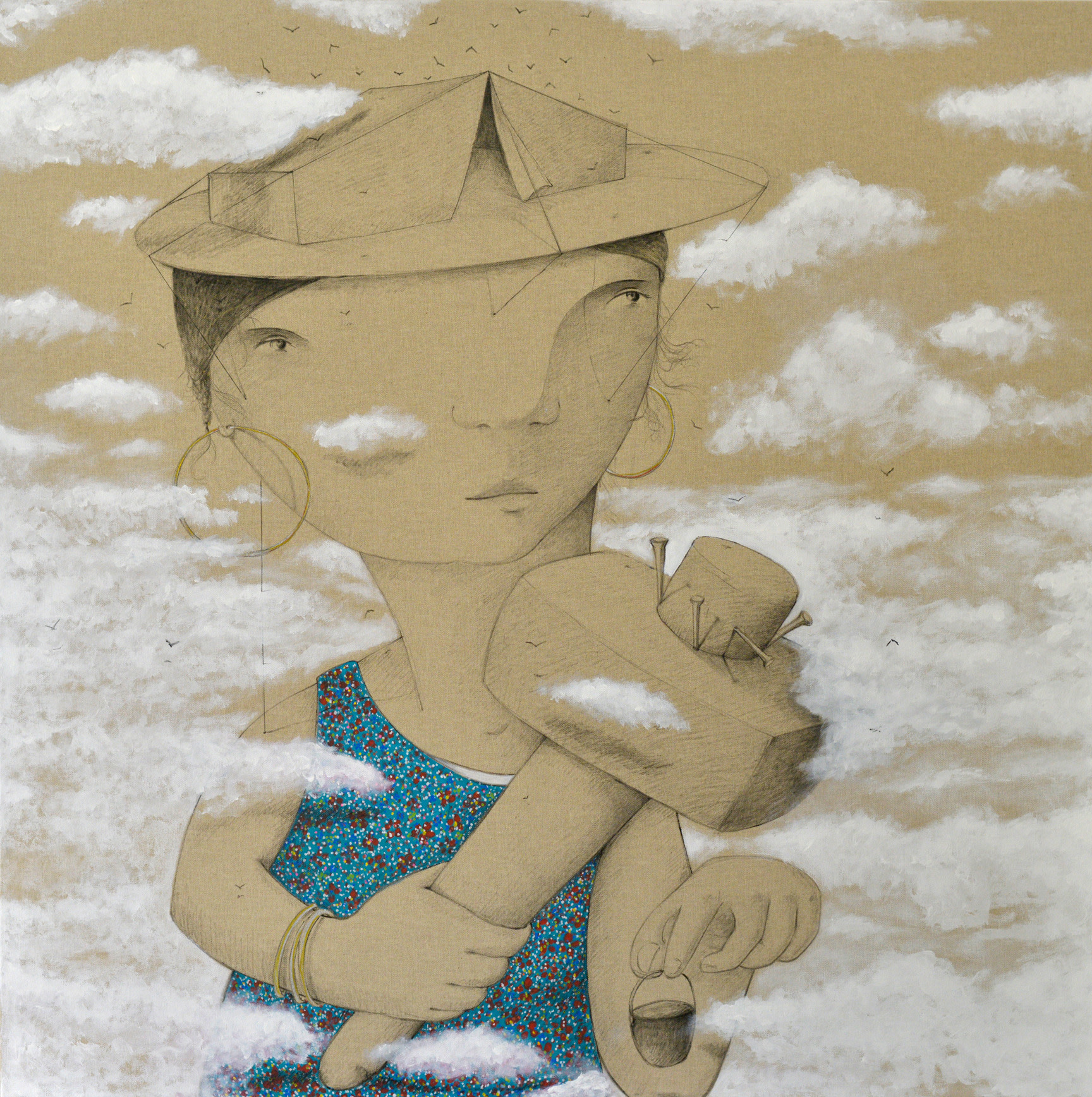
My latest series, Above the Fray, marks something of a shift and perhaps a feeling of escapism from all this focus on war, uncertainty and terror. I’ve been fascinated by the technical challenge in painting clouds and how to achieve that almost magical sense of intangibility. The clouds represent an escape from all the corruption and the suffocating rules that are strangling Lebanon. I also like the idea that clouds are travellers, like so many of us caught up in the endless cycle of displacement.
Overall, this is my place now. Beirut is so diverse and the contrast in areas, people and everyday activities challenges you in a good way. I feel I’ve evolved during my time here. Last year I went to Europe, visiting Italy and the Netherlands. I liked them a lot, but what would I do there? Here in Beirut I have found my place and I have work. Like those clouds, I’ve been to different places, but I come back here. Clouds, drift across continents, just like us. We are the same.
As told to Anna Wallace-Thompson